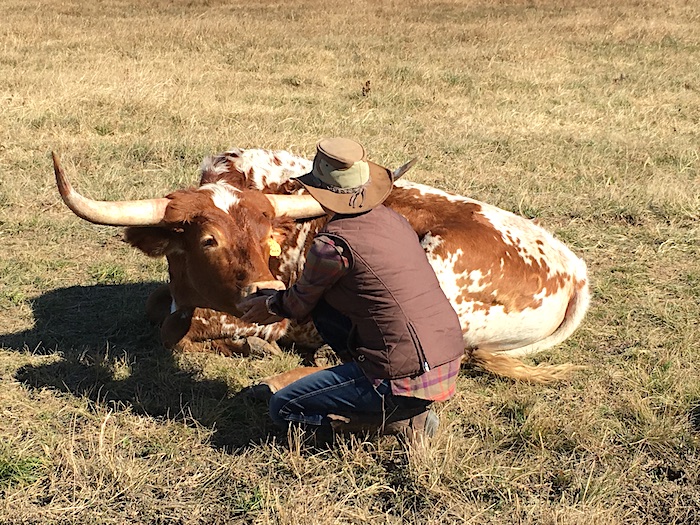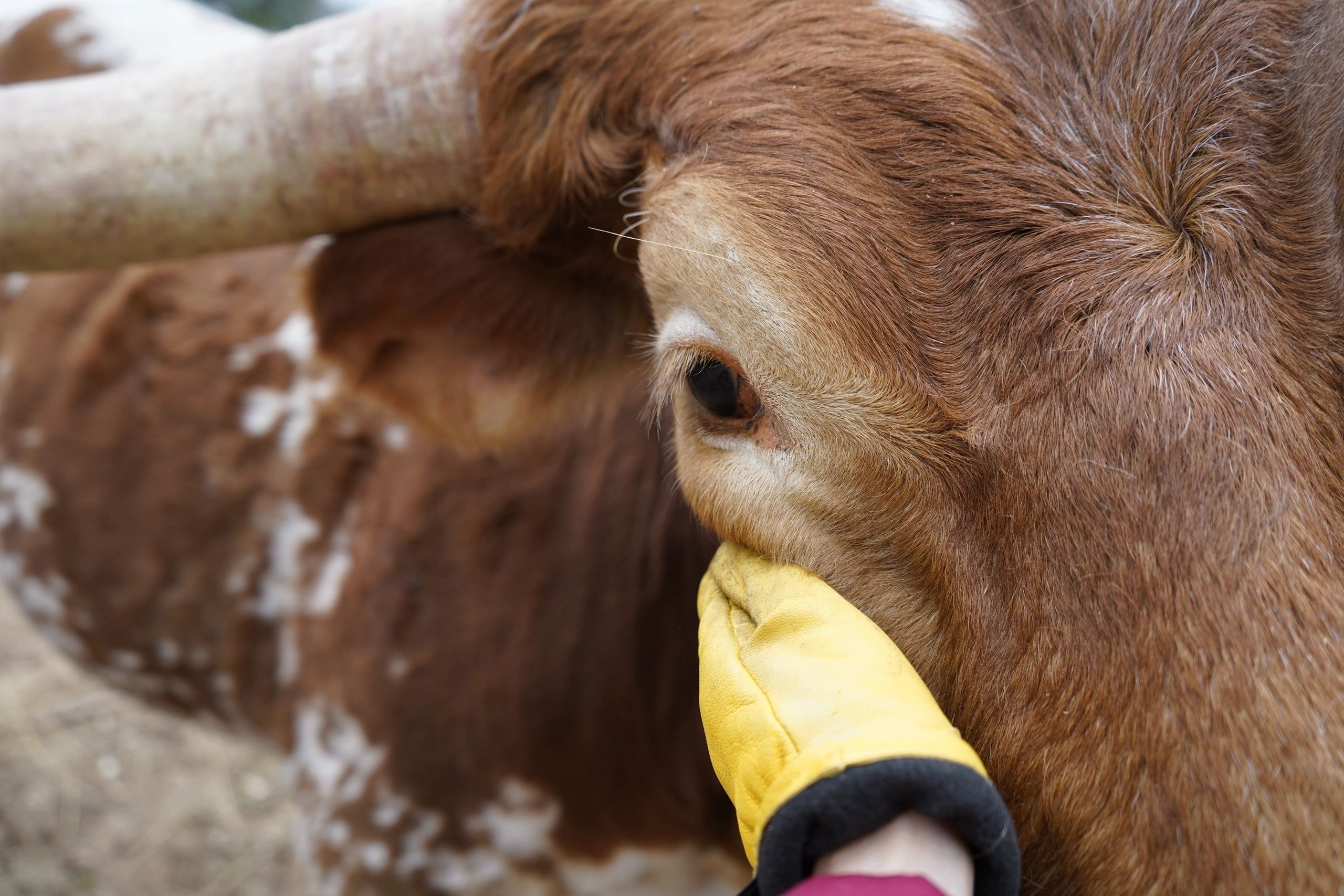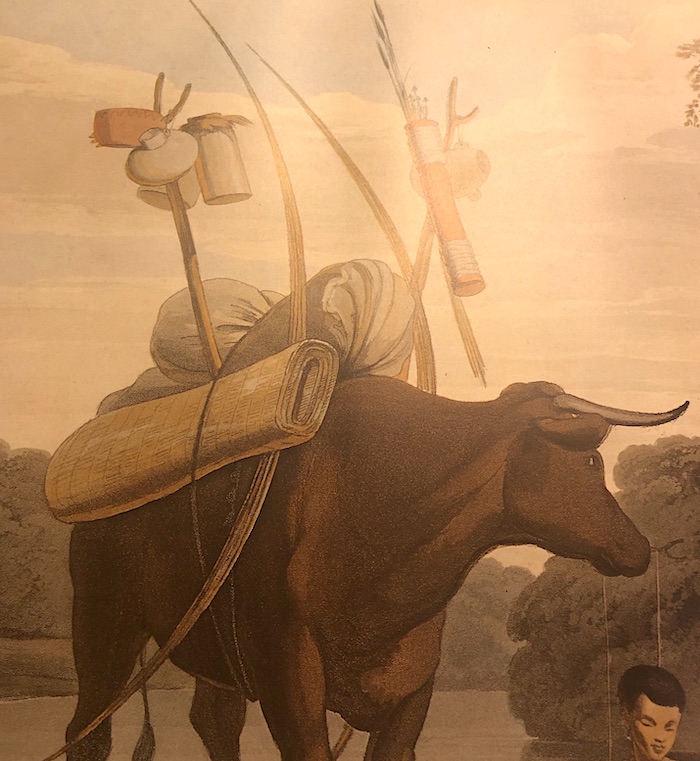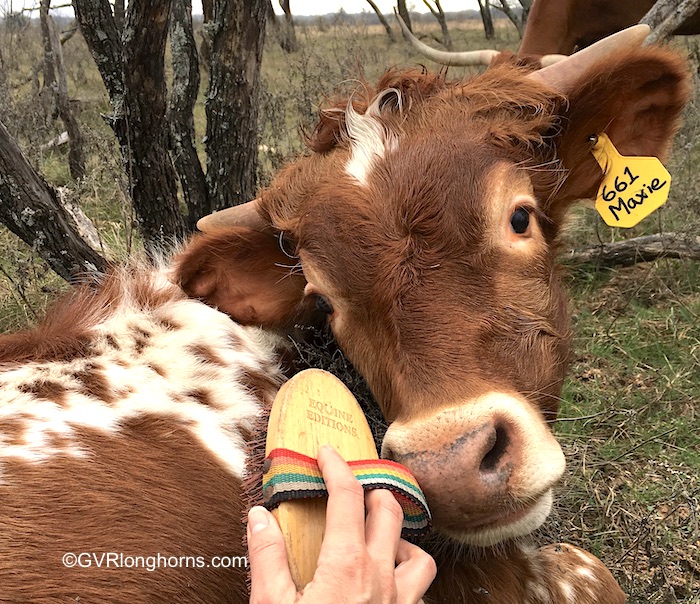I talk to my Texas longhorn cattle and sometimes they look at me funny.
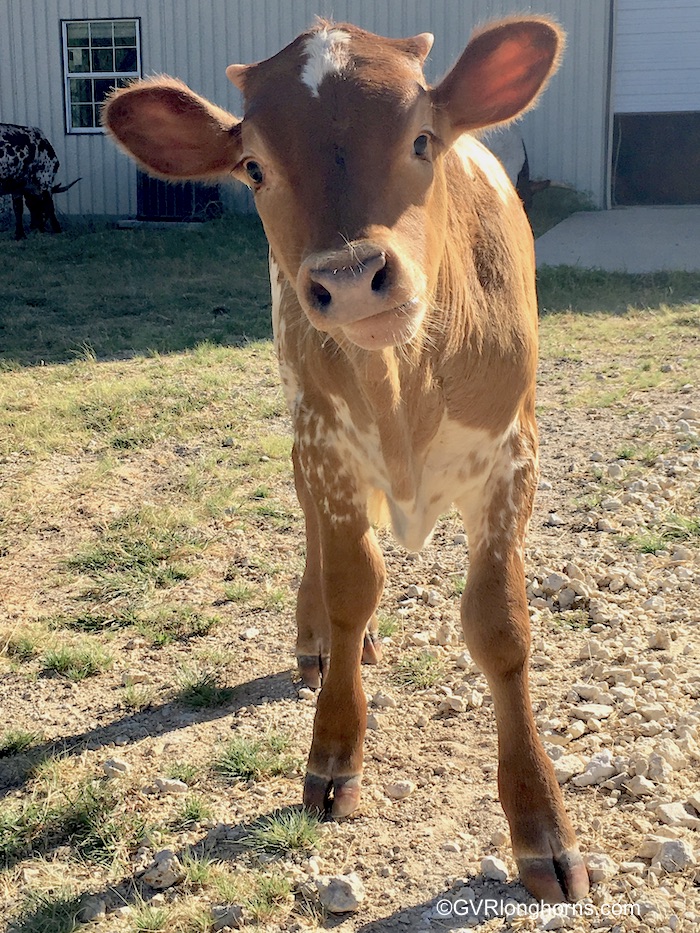
A few days ago, in conversation with a friend, I mentioned my love for everybody in my herd. We‘ve been friends a long time so she just humored me with a response that she likes cows but does not love them.

This triggered a thought. Ever since I can remember, I liked cows too but I also did not love them. There have been a few experiences in my life that impacted my overall change of heart, and a subsequent adjustment of my cowmoonications, one of which includes one particular Texas longhorn steer – Maxie.
Setting the Scene: The Background a significant path to Texas Longhorn Cattle
Going back ”a few” years or so, when I was a small kid in South Africa and my sister was even smaller, we would travel by car out of the city to go on a family vacation. A favorite game to keep us occupied was to count cattle along the way. (There were no electronics in those ancient days.) Herds of cattle were plentiful. As we constantly interrupted each other the game was endless. We would restart our count again and again and again……..another story for another time!
Interesting about those bygone days, however, is that many of those cattle herders en-route, were kids themselves. Perhaps even more impressive is that their rural homesteads and the fields in which their cattle grazed lacked fencing, for the most part. Herders, often on foot, would lead their herds where they needed the animals to go and lead them back home again at dusk.
In retrospect, their cattle management skills and the ability to train cattle with no apparent yelling, waving, or prods, and on foot, was, admirable. For those communities in Southern Africa still farming this way, they seem to have an insight into their animals’ psyche, a skill passed on from one generation to the next.
A book in Paul’s collection, African Scenery and Animals, by Samuel Daniell, depicts this commendable relationship between man and bovine. The print below was illustrated by S. Daniell and was originally printed in 1804-5. (see full reference below)
Another book in Paul’s extensive collection.
The Abundant Herds, 2003, Fernwood Press, Poland, Marguerite, Hammond-Tooke, David, Voigt, Leight An interpretation of the significance of cattle within the Zulu nation at a time of that nation’s supremacy. They were and remain exceptional herdsmen.
An example of traditional Herdsmen of yesteryear.
- Like the majority of Texas Longhorn cattle breeders today, they could distinguish their cattle individually.
- They had specific calls for each animal.
- Herdsman named animals according to their markings.
- They favored some animals over others.
- Pure white cattle, or those lacking alleles, were put aside for royalty. (In June last year, Paul and I witnessed the EOT auction where the highest bid animal lacking alleles reached a bid of $75,000.00.)
- Similarly, pure black coloration was held in higher regard.
- Cattle in good favor received special concessions and were not eaten.
The Zulu herdsmen had time and patience to know their cattle individually.
” The art of training them is for a man with a just hand and the wisdom of patience and compassion.” (Poland,M., Hammond-Tooke, D., Voigt, L., 2003,pg84)
Low Stress Livestock Handling
Bud Williams, was an expert and proponent of Low Stress Livestock Handling methods. His school continues to teach his techniques of low-stress management. Once you are proficient in their methodology, their teachings emphasize patience, to take time to understand and know your cattle. The objective is to move cattle where you want them to go STRESSFREE, the challenge today is – who has the time?
It is certainly a skill to synchronize a herd’s movement. I’m not a skilled horserider but in Texas, I have spent many weekends riding with cowboys as they steer hundreds of cattle from one pasture to another. It is an incredible feeling and a spectacular site. I cannot, however, imagine accomplishing this on foot.
Nonetheless, I do not underestimate anyone’s ability to herd cattle. I also admire those who show stock animals. And even though we had a stint showing Texas Longhorn cattle, I never quite got the hang of it- although our son, Alex did pretty well on the circuit.
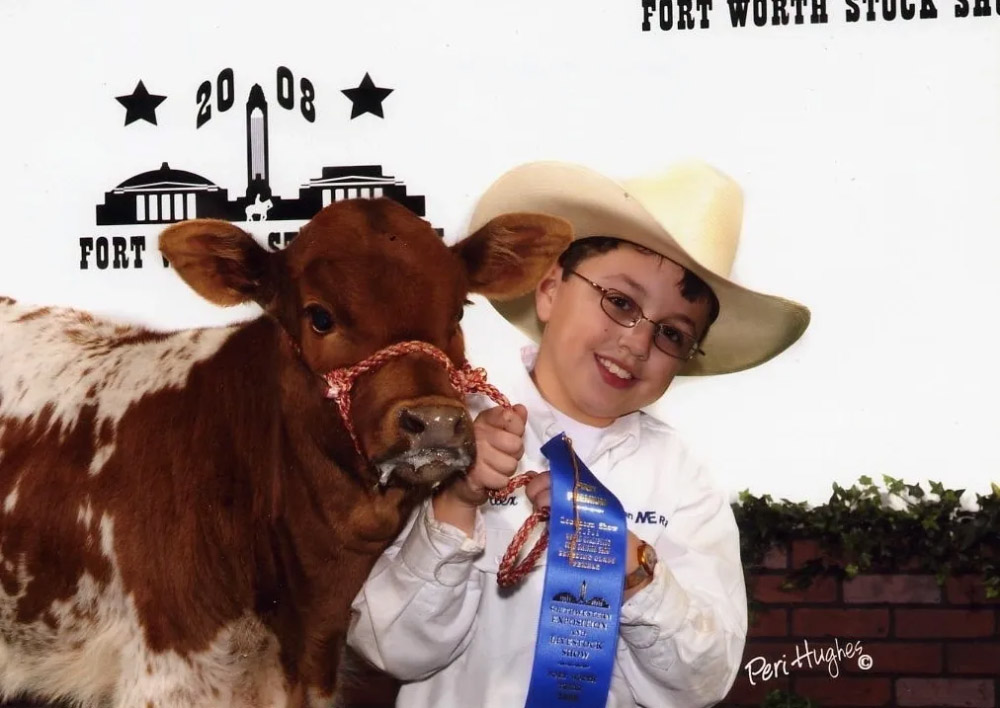
Not until I met Maxie Moo, or until Maxie introduced himself to me, did I start to perceive my bovine animals on another level. Maxie Moo was my muse on things Texas Longhorn and on things that say MOO.
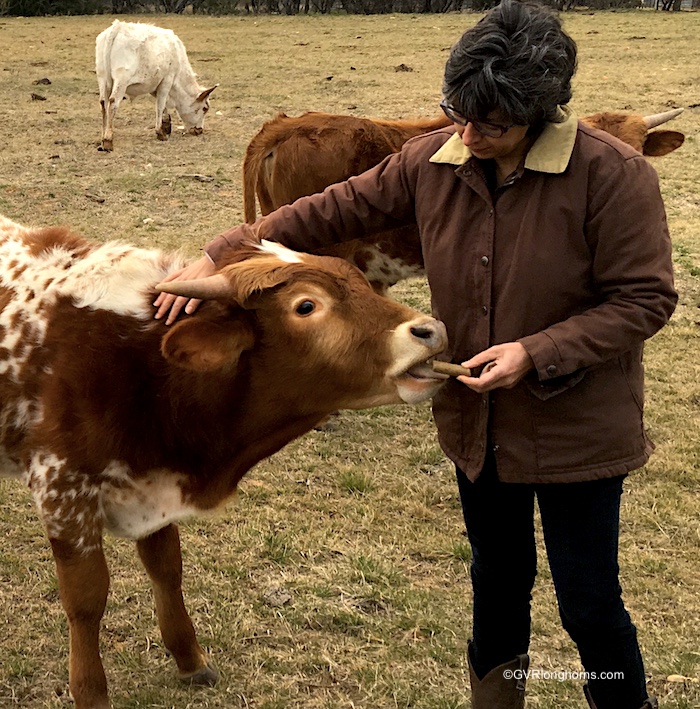
In Conclusion
Maxie made me love him. He let me feed him, brush him, and make a fuss of him. Several years down the line, he still waits for me at the gate when the herd ambles on. He accompanies me on the trails like a dog follows its owner when it is taken on a daily walk. He MOOOVed me emotionally – and, that was the KEY.

Bearing in mind I was a city girl growing up, this was huge. I did not know bovines like I know them now. I also did not know that to truly know them, is to love them. That took me by surprise!
All the same, at Green Valley Ranch we have not mastered Stockmanship in its totality. We do not pertain to be experts. Even though some animals come into the chute on their own, not all our Texas Longhorn Cattle line up willingly for their treatments, with their horns held back.
However, maybe because they are so aesthetically different, we seem to understand our Texas Longhorn cattle more so than other cattle we have had.
Our herd is more than a commodity to us. We do want to know them, or at least I do, and strive to reduce their stress, build their trust, and gain control.
What we have realized, is that whether you have the time or not, time is crucial. There are no shortcuts.
The Bottom Line – Texas Longhorn cattle require patience and consistency.
All learning considered, time is what it takes to master the way of cattle.
Thank you for reading our BLOG. Please follow us on Facebook and Instagram @GVRlonghorns
Please SUBSCRIBE AT GVRlonghorns.com
Visit our SALEBARN – CLICK HERE
We have registered our Texas Longhorn Herd with TLBAA. Our Texas Longhorn Cattle have the finest genetics and are fairly priced.
Each one of our Longhorns brings something special to the herd. As a community they are fascinating. We learn more about them every day. They bring us tons of joy. Your comments make us happy too. Please let us know what you think of our blog and if you are also lucky enough to have cattle, do they behave similarly/differently or in ways that stand out?

Disclaimer: The material noted above is based on our hands-on experience as farmers, as well as our observations of our own cattle over the years. We have done and continue to do extensive research in order to maintain our herd‘s optimum health and in order to best manage Green Valley Ranch. We respect our animals and would not approach cattle we do not know. All opinions on our website are guidelines only. We are not trained specialists in animal behavior, nor are we qualified veterinarians or accountants and we urge you to consult a specialist with your concerns.
GVR Longhorns LLC owns all content and information on this blog. It may not be copied in any form. ©GVRlonghorns.com All rights reserved.
References:
– Daniell, Samuel, African Scenery and Animals A facsimile reprint of the aquatint plates originally published in 1804-5, 1976, A.A. Balkema.
– Poland, Marguerite, Hammond-Tooke, David, Voigt, Leight, The Abundant Herds, 2003, Fernwood Press.
– https://www.blm.gov/or/programs/nrst/files/Stockmanship_Book.pdf
– http://www.africapotential.africa.kyoto-u.ac.jp/wp-content/uploads/2015/08/4_Fujioka.pdf

